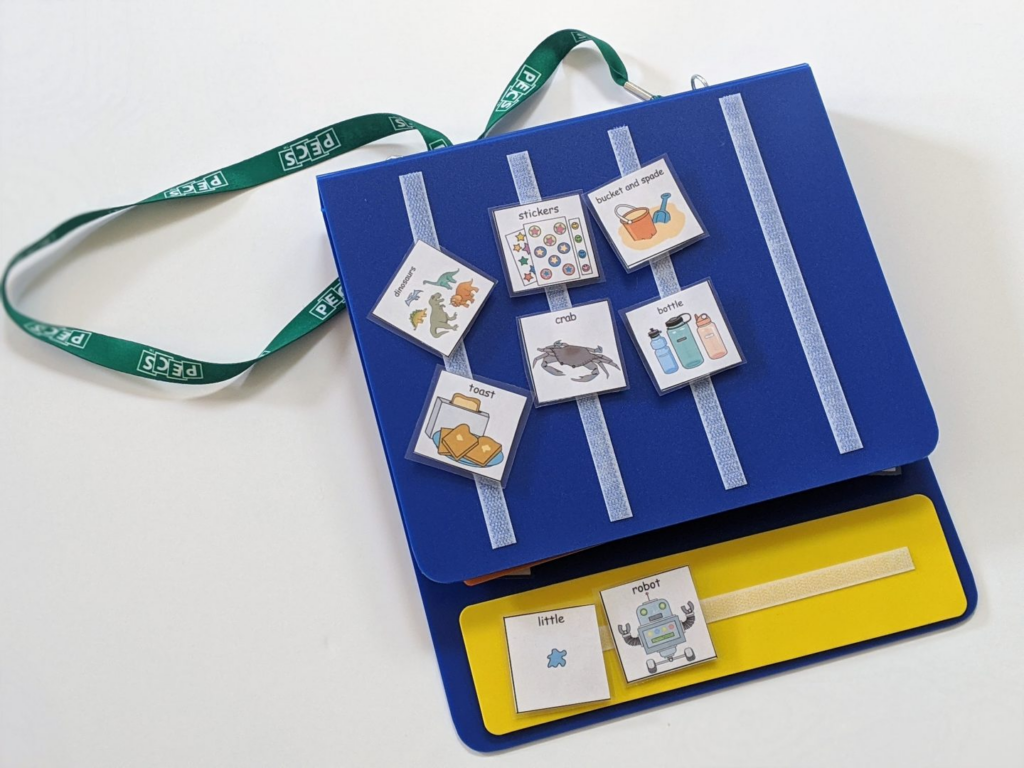Communication is a fundamental aspect of human interaction, enabling us to express thoughts, feelings and needs. For individuals with autism, communication can be a significant challenge due to differences in social interaction and language development. The Picture Exchange Communication System (PECS) has emerged as a valuable tool in helping individuals with autism bridge this communication gap. In this blog post, we will delve into the concept of PECS, its benefits, and how it can make a positive impact on the lives of individuals with autism.
The Picture Exchange Communication System (PECS) is an evidence-based communication intervention developed specifically for individuals with limited verbal communication skills, including those with autism spectrum disorder (ASD) .PECS employs a visual-based approach to facilitate communication, enabling individuals to express their needs, wants, and thoughts through a series of pictures or symbols.
How PECS Works:
- Phases of PECS: PECS is typically taught in six progressive phases, each building upon the previous one. The process starts with teaching the individual to exchange a single picture for a desired item or activity. Over time, the complexity increases as the individual learns to create sentences using picture symbols.
- Initiation and Motivation: One of the strengths of PECS is that it focuses on initiating communication by encouraging the individual to approach a communication partner and exchange a picture for a desired item. This promotes social interaction and reduces the reliance on challenging behaviors to communicate needs.
Benefits of PECS for Autism:
- Improved Communication: PECS provides a structured and systematic way for individuals with autism to initiate and engage in communication. It helps them express their preferences, requests, and feelings effectively.
- Reduced frustration: Difficulty in communicating can lead to frustration and behavioral challenges. PECS equips individuals with a reliable way to communicate, reducing their frustration and potentially diminishing problem behaviors.
- Increased Social Interaction: By encouraging individuals to interact with communication partners, PECS foster social engagement and initiates meaningful interaction. It enhance their ability to engage with peers, caregivers, and educators.
- Language Development: As individuals progress through the phases of PECS, they develop the foundation for more complex communication skills, which can contribute to improved language development and understanding.
- Independence: PECS empowers individuals with the tools they need to communicate their needs independently, enhancing their sense of autonomy and self-confidence.
Implementing PECS requires proper training and guidance. Professionals, caregivers, and educators need to be trained in the principles and techniques pf PECS to ensure its effectiveness. Collaboration between home and educational settings is essential for consistent implementation.
Conclusion
The Picture Exchange Communication System (PECS) offers a ray of hope for individuals with autism who struggle with communication. By using visual aids and a systematic approach, PECS opens doors to effective communication, social interaction, and increased independence. It’s important to recognize that each individual is unique, and the success of PECS can vary. Therefore, a personalized approach that takes into consideration the individual’s preferences, strengths, and needs is crucial for its successful implementation.
Incorporating PECS into the lives of individuals with autism can truly be transformative, enabling them to express themselves and connect with the world in meaningful ways.



